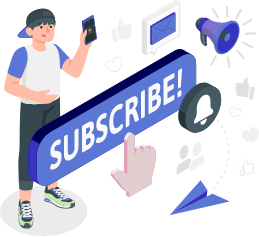Key Takeaways:
- Effective interviews improve team performance and hiring outcomes.
- Managers must foster inclusivity, reduce bias, and use structured techniques.
- Behavioral and competency-based questions reveal deeper candidate insights.
- Panel interviews require clear roles and logistical planning.
- Regular interviewer training and feedback processes drive continuous improvement.
Unlocking exceptional workplace communication is a cornerstone of organizational success, particularly among federal employees seeking peak performance. Collaborative leadership techniques foster openness, reduce misunderstandings, and empower employees to share their perspectives effectively. By blending practical strategies with proven methods, managers can elevate communication to new heights, resulting in stronger teams and superior outcomes.
Why Conducting Effective Interviews Matters More Than Ever
The hiring process lays the foundation for every team’s communication culture. Effective interviews are not merely about filling vacancies—they impact long-term organizational success, shape team dynamics, and influence overall morale. Poorly conducted interviews can introduce misfits, disrupt workflow, and lead to increased turnover, while robust interview methods identify candidates whose communication styles and values fit seamlessly with existing teams.
Common pitfalls during interviews include relying too heavily on gut instinct, failing to prepare structured questions, or allowing unconscious biases to skew evaluations. Over time, these errors compromise communication by selecting team members who may not align with or improve collaborative efforts. A purposeful, thoughtful interview process ensures each hire contributes to open, respectful dialogues across all levels.
Interview Best Practices for Managers
Fostering communication begins at the interview table. Creating an inclusive environment is essential—every candidate deserves to feel heard and valued. This inclusivity starts with clearly outlining the agenda, setting expectations, and expressing appreciation for the candidate’s presence. Providing a welcoming atmosphere helps reduce anxiety, empowering candidates to communicate authentically.
Building Rapport in Interviews: Techniques to Put Candidates at Ease
- Begin interviews with brief, friendly conversation.
- Share the interview structure and clarify roles.
- Use active listening—demonstrate empathy and acknowledge responses.
These tactics encourage honesty, set a collaborative tone, and invite candidates to showcase their true selves.
Reducing Interview Bias: Actionable Steps for Fair Evaluation
- Develop standardized questions for all candidates.
- Use diverse interview panels to capture multiple perspectives.
- Rely on evidence-based evaluations rather than first impressions.
Small, consistent steps like these help ensure selections are rooted in skill and cultural alignment rather than unconscious predispositions.
Mastering Behavioral Interviewing Techniques
Behavioral interviewing is a proven technique for uncovering how candidates handle real-world scenarios. This process reveals deeper insights into a candidate’s communication methods, conflict resolution skills, and adaptability. Instead of hypothetical questions, managers ask candidates to describe actual experiences, which provides a richer understanding of their abilities.
Leadership Interview Questions That Reveal True Potential
- “Tell me about a time you resolved a disagreement between colleagues. What steps did you take?”
- “Can you provide an example of how you communicated a complex idea to your team?”
- “Describe a moment when you had to collaborate under pressure. How did you ensure everyone stayed informed?”
These questions illuminate the candidate’s approach to leadership and communication, showcasing soft skills essential for strong workplace connections.
Developing and Using Customized Interview Scoring Rubrics
Customized scoring rubrics add structure to the evaluation process. By establishing clear criteria for each question or competency, interviewers can rank candidates objectively, minimizing subjectivity. Involve team members in drafting these rubrics to reflect communication priorities specific to the organization.
Structured Interview Methods: Improving Consistency and Objectivity
Structured interviews, where each candidate is asked the same carefully crafted questions, promote fairness and repeatability. In contrast to unstructured approaches, this method provides a consistent framework for assessment and facilitates direct comparison between candidates.
Evaluating Candidate Competencies with Competency-Based Questions
Prepared questions should target competencies such as active listening, conflict resolution, and collaborative problem-solving. Examples include:
- “Describe a situation where you had to facilitate agreement among disagreeing team members.”
- “How have you handled feedback that challenged your viewpoint?”
Managers benefit from noting specific instances, outcomes, and demonstrated communication skills during their assessment.
Assessing Cultural Fit in Hiring Decisions
Strong workplace communication is shaped by culture. Assessing cultural fit involves determining whether candidates’ values and interaction styles align with those of your current team. Ask:
- “What communication environment helps you thrive?”
- “How do you approach team discussions when you have a differing opinion?”
Such questions evaluate adaptability and openness—critical to collaborative environments.
Expert Tips for Panel Interview Coordination
Panel interviews harness diverse perspectives while evaluating candidates. Proper organization is vital to avoid confusion and ensure comprehensive assessment. Establish clear roles among the panel, such as lead interviewer, timekeeper, and note-taker, to streamline the process.
Assigning Roles and Managing Interview Logistics
- Assign specific questions to panel members based on expertise.
- Schedule pre-interview meetings to align on priorities.
- Ensure panelists are aware of interview objectives and assessment criteria.
Thoughtful logistics management allows for a coordinated, productive experience that maximizes insight into each candidate’s communication skills.
Remote Interview Guidelines for Leaders: Best Practices for Virtual Teams
- Test all technology in advance.
- Encourage everyone to keep cameras on for engagement.
- Review guidelines for respectful communication—such as not interrupting and allowing pauses for responses.
Remote interviews can be just as effective as in-person sessions when leaders set clear expectations, minimize distractions, and replicate an inclusive, communicative environment.
Effective Interview Feedback Strategies for Managers
Feedback is essential in cultivating continuous improvement—both for candidates and for the interview process itself. Constructive feedback, delivered respectfully, gives candidates a clear sense of how they performed while demonstrating the organization’s commitment to transparency.
Debriefing with the Panel: Collaborative Evaluation
After interviews, panels should convene to discuss each candidate’s strengths and areas for development. This group assessment enables a holistic, balanced decision reflecting the broader team’s communication values. Document findings and adjust scoring rubrics as needed based on emerging insights.
Decision Making After Interviews: Streamlining Succession Planning
Use insights from well-structured interviews to inform succession strategies. Focus on not only who can excel today, but who possesses the communication and collaborative skills to adapt as organizational needs evolve. Maintain open records of feedback, evaluation, and reasoning to foster clarity and fairness in long-term talent decisions.
How to Keep Enhancing Interviewer Skills
Skillful interviewing is an ongoing journey. Encourage ongoing training for all managers, using workshops, peer reviews, and self-assessment tools. Stay informed of evolving best practices and update frameworks as new methods emerge. Soliciting feedback from candidates and panelists also enhances future performance.
Committed, well-trained interviewers ensure every new hire strengthens team communication, aligns with organizational values, and contributes to a thriving collaborative culture.












